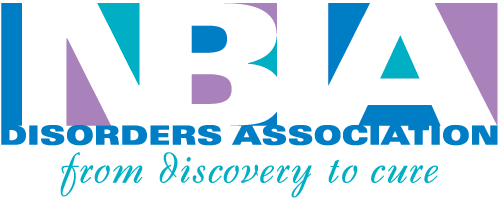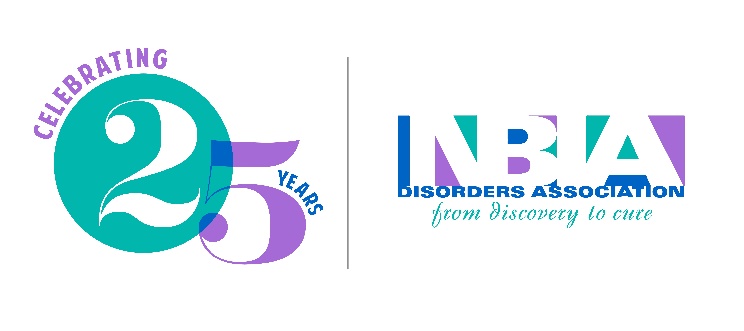Globale Zusammenarbeit führt zu Fortschritten in der MPAN-Forschung
Globale Zusammenarbeit führt zu Fortschritten in der MPAN-Forschung
Im November 2022 vergab Hoffnungsbaum e.V. zusammen mit den Schwesterorganisationen NBIA Disorders Association (NBIA DA) in den USA, Associazione Italiana Sindromi Neurodegenerative da Accumulo di Ferro (AISNAF) in Italien und Stichting Ijzersterk in den Niederlanden zwei Stipendien zur Erforschung der Mitochondrien-Membranprotein-assoziierten Neurodegeneration (MPAN) in Höhe von jeweils 70.000 US-Dollar (https://www.hoffnungsbaum.de/zwei-mpan-projektfoerderungen-vergeben/). Diese einjährigen Zuschüsse wurden auf der Grundlage von Prioritäten vergeben, die während eines MPAN-Workshops festgelegt wurden, der Teil einer MPAN-Forschungslandschaftsanalyse war, welche ebenfalls von denselben Organisationen finanziert wurde.

Prof. Lena Burbulla
Ludwig-Maximilians-Universität München
München, Deutschland
Prof. Lena Burbulla von der Ludwig-Maximilians-Universität München und Dr. Rajnish Bharadwaj vom Medical Center der University of Rochester in New Jersey, haben kürzlich ihre Forschungsarbeiten im Rahmen dieser Förderung abgeschlossen und berichten beide über vielversprechende Ergebnisse.
Burbullas Forschung umfasste die Modellierung von MPAN auf Zellebene, um neue zugrundeliegende Mechanismen zu entdecken, die die Pathologie bei MPAN bestimmen. Zu diesem Zweck verwendete ihr Labor induzierte pluripotente Stammzellen (iPSC), die aus den Hautzellen von MPAN-Patienten gewonnen wurden.
Die Gehirne von MPAN-Patienten weisen einen massiven Verlust von Nervenzellen in bestimmten Regionen auf, vor allem in einer Region des Mittelhirns, der Substantia Nigra. Hier ist der Verlust von Zellen, die den Neurotransmitter Dopamin produzieren, beträchtlich, und es wird vermutet, dass dieser für die große Mehrheit der klinischen Symptome verantwortlich ist. Daher verwendete Burbullas Team Stammzellen von MPAN-Patienten und wandelte sie in mittelhirnspezifische dopaminerge Nervenzellen um, also die Art von Zellen, die im Gehirn von MPAN-Betroffenen degenerieren, um Mechanismen zu identifizieren, die speziell diesen anfälligen Zelltyp betreffen.
Sie waren in der Lage, wichtige Aspekte der Krankheitspathologie in den Gehirnen von Patienten zu rekapitulieren, was die von Patienten stammenden dopaminergen Nervenzellen in der Petrischale zu einem wertvollen Modell für die Untersuchung krankheitsspezifischer Phänotypen macht.
Sie beobachteten auch eine Anhäufung von Alpha-Synuclein, einem präsynaptischen Protein, von dem bekannt ist, dass es sich in den Gehirnen von MPAN-Patienten ansammelt, was ein Merkmal für Eisenfehlregulierung, welche letztlich zu einer Eisenansammlung führt, ist. Sie stellten außerdem axonale Schwellungen fest, welche auch in postmortalen Gehirnbiopsien beobachtet wurden.
Weitere, davon unabhängige Proteinanalysen ergaben, dass einige mitochondriale Schlüsselproteine dysreguliert und mehrere Proteine, die mit Neurotoxizität und der Aktivierung der Immunantwort des Gehirns in Zusammenhang stehen, verstärkt sind. Diese einzigartige Proteinsignatur könnte einen ersten Einblick geben, warum dopaminerge Nervenzellen im Gehirn von Patienten besonders anfällig sind und degenerieren.
Burbulla erklärt, dass einer der vielversprechendsten Vorteile menschlicher iPSCs ihre Eignung als patientenspezifisches Krankheitsmodell ist, das die Möglichkeit bietet, tiefere Einblicke in Krankheitsmechanismen und -verläufe zu gewinnen. In dieser Studie konnten sie zeigen, dass aus iPSC gewonnene Nervenzellen von MPAN-Patienten Aspekte der menschlichen Krankheitspathologie wiedergeben und daher als wertvolles Modell für ein besseres Verständnis der krankheitsspezifischen Mechanismen dienen.
Burbulla plant die Veröffentlichung ihrer Ergebnisse und hofft, weitere Studien mit von Patienten abgeleiteten Krankheitsmodellen durchführen zu können, in der Hoffnung, neue therapeutische Ansätze zur Bekämpfung von MPAN zu finden.

Dr. Rajnish Bharadwaj
University of Rochester Medical Center
Rochester, New Jersey
Bharadwajs Forschung verwendete Fruchtfliegenmodelle, die ein Gen namens Nazo tragen, dessen menschliche Entschprechung C19orf12 ist, welches beim Menschen für MPAN verantwortlich ist. Anhand dieser Fruchtfliegen konnte Bharadwaj zeigen, dass das Nazo-Protein für die Aufrechterhaltung von Lipidtröpfchen erforderlich ist, die Speicherstellen für Triglyceride (Fett) sind. Fehlt es, sind Proteine, die an der Eindämmung der Fettverwertung (durch Lipolyse) beteiligt sind, vermindert. Der Verlust des Nazo-Gens hat erhebliche Auswirkungen auf die Lebensspanne und die Gesundheit der Fliege.
Bharadwaj arbeitet an einem tieferen Verständnis der Veränderungen in den Lipidtropfen bei Fliegen, denen das Nazo-Gen fehlt. Interessanterweise ist das menschliche C19orf12-Protein im Fettgewebe stark angereichert. Die Ergebnisse von Bharadwaj deuten darauf hin, dass Lipidanomalien zur Neurodegeneration beim Menschen beitragen können.
Bharadwaj hat bereits eine Arbeit über seine Ergebnisse veröffentlicht, die hier zu finden ist: https://journals.plos.org/plosgenetics/article?id=10.1371/journal.pgen.1011137
Er plant, die mit diesem Stipendium gesammelten Daten zu nutzen, um Forschungsgelder bei den National Institutes of Health (NIH) für die Fortführung der Arbeit zu erhalten. Es ist zu hoffen, dass diese Studie die Grundlage für künftige Untersuchungen zur Rolle des menschlichen C19orf12-Proteins bei NBIA bildet.
Hoffnungsbaum e.V. setzt sich gemeinsam mit ihren internationalen Partnern der NBIA-Allianz weiterhin dafür ein, die Forschung voranzutreiben, die uns dem Verständnis und letztlich der Heilung von MPAN näher bringt. Wir feiern diese Fortschritte von Burbulla und Bharadwaj und freuen uns auf weitere Durchbrüche, die das Leben der von NBIA-Erkrankungen Betroffenen verbessern werden.
Angepasste Übersetzung eines Artikels von Patricia Wood aus dem Newsletter der NBIA Disorders Association vom Juli 2024
https://nbiadisorders.org/news-events/nbia-newsletters/






